Almost everybody in the world knows about the unique state of Korea. It is divided into two countries, North Korea, and South Korea. So you should probably be specific when you state something about going to Korea because there are two countries. As we all know these two countries are not on good terms or at least they want the citizens or the other nations to perceive that they are fine, but many claims that the mandatory military service of South Korea (for men) is actually a preparation just in case a war broke out, but who knows, it might just be a rumor.
South Korea is a country that is thriving compared to the north where it is practically close to outsiders. Even though they are both Korean countries, of course, their culture differs, but of course, since the outside world is prohibited in the North, nobody knows what is really going on there, how they have a daily life, or if there are certain culture and tradition they follow (or are they same with the South). On the other hand, South Korea is bustling with culture and traditions, and this article is all about it. So if you are interested in the cultures and traditions in Korea, then you might want to dive deep into this article.
#1. Honorifics are a must
Unlike western countries which usually don’t have honorifics for a person of different age levels, Asian countries have honorifics per gender and age. In Korea, there are many honorifics to distinguish a person. Here are some of the honorifics you need to remember, especially if you are gonna travel or live in Korea:
- 형 (Hyung) – it also means “Older brother” but, it is used by males/boys to call an older guy.
- 오빠 (Oppa) – means “Older brother” it is usually not just for siblings or relatives, it is used by girls to call an older boy/guy.
- 누나 (Noona) – means “Older sister” but is used by males to address an older girl.
- 언니 (Eonnie) – also means “older sister” but is used by females to address an older girl.
- 후배 (Hoobae) – means “junior” it is used by people with a higher rank or people at work with longer experience to call the people new in their workplace. It is also used at school to address “freshmen” or younger students than you.
- 선배 (Sunbae/Sunbaenim) – means “senior” it is used by juniors to address people they consider their seniors.
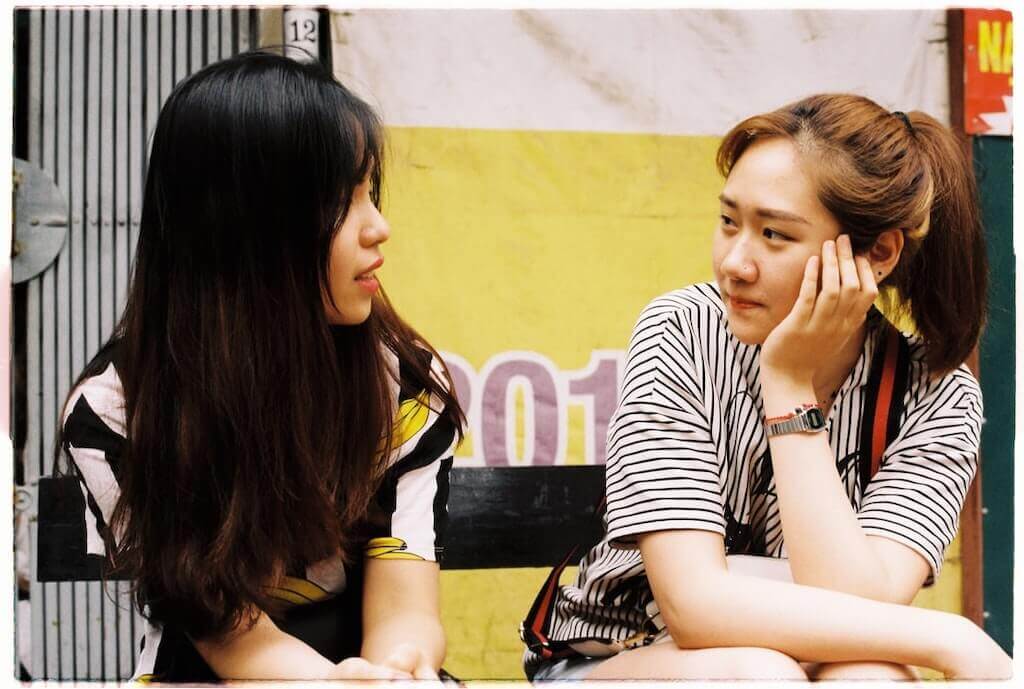
#2. Hanboks
These are the traditional clothes in Korea. In the early ages, it is the ones worn by the citizens. Hanbok is Korea’s Kimono (Japanese traditional wear). Though hanboks are worn by all the citizens in the country in ancient, social status can be distinguished by the material of the hanbok. If the hanbok is with silk and satin, then that means that the person wearing is of high status.
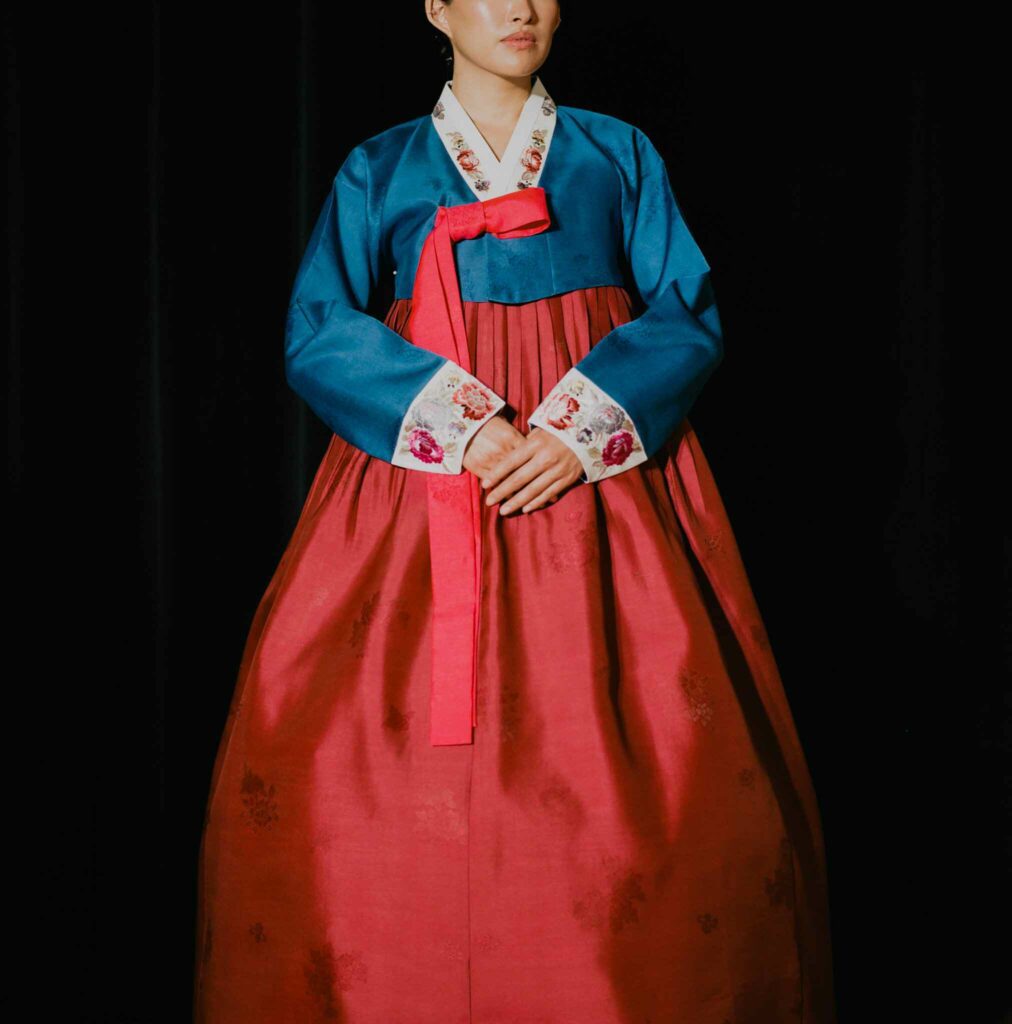
#3. Bowing and Handshakes
Korea’s way of respect is very rich that even children are taught to do this at a young age. Bowing and Handshakes are signs of respect in Korea. Bowing can be made when greeting one person to show respect. When showing respect in the right way, Koreans bow at a 90-degree angle with both hands either placed on the stomach or at their sides. Bowing to the ground (kneeling while bowing) is the highest form of respect gesture in Korea, so if a person does this to another person, it means he/she respects that person highly. Koreans also do handshakes especially when they are being introduced to or know another person. Their way of the handshake is either you hold the hand that you will use to shake or place your other hand in your stomach while shaking with the other hand.
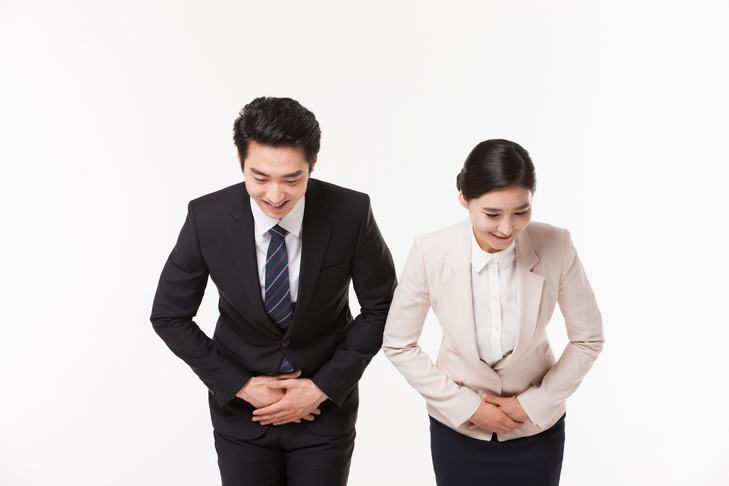
4. Valentine’s Day is different
As we all know, Valentine’s day is usually done with the men making efforts to take a girl out on a date or to buy the girl gifts such as flowers, and chocolates. But in Korea it is different. Girls will be the ones to make efforts for their significant other or gift gifts to the guy they like. And in return, they get to receive the reciprocated effort in March, and that day is called White day.
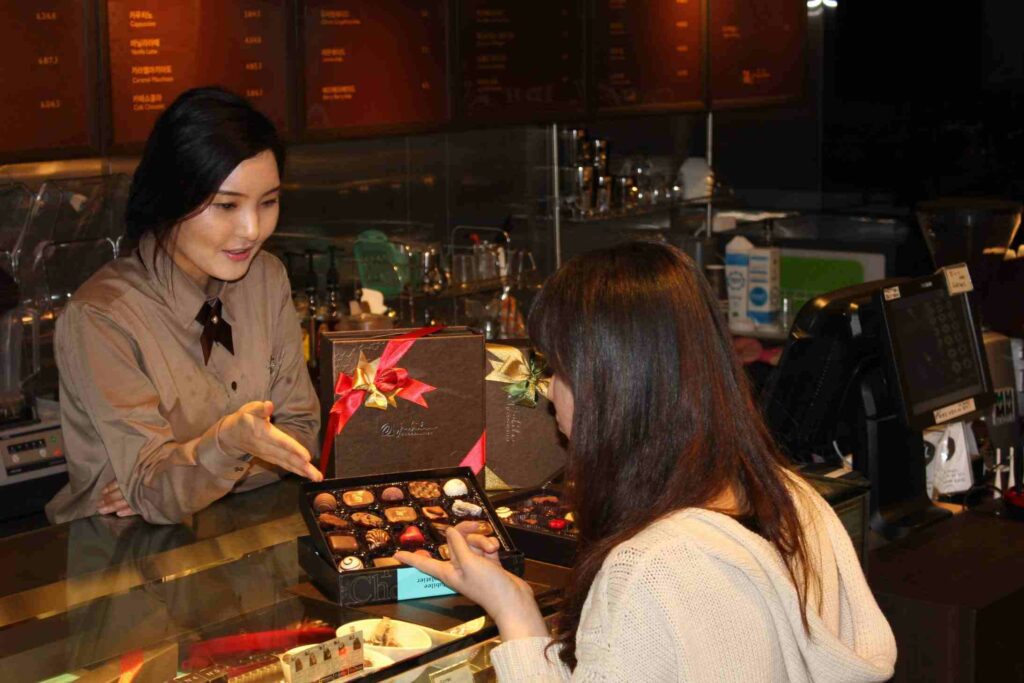
You May Also Like These
#5. Chuseok
Chuseok is Korea’s thanksgiving day. It is a three-day holiday in Korea that happens on September 28 – 30. Chuseok is when Koreans go home to their hometowns starting September 10, to celebrate with their loved ones on the 28th. It is also like ancestral worship where they give their thanks to their ancestors and harvest feasts. Many foods are being served at this event but one food that should not be missing from the table is the rice cakes.
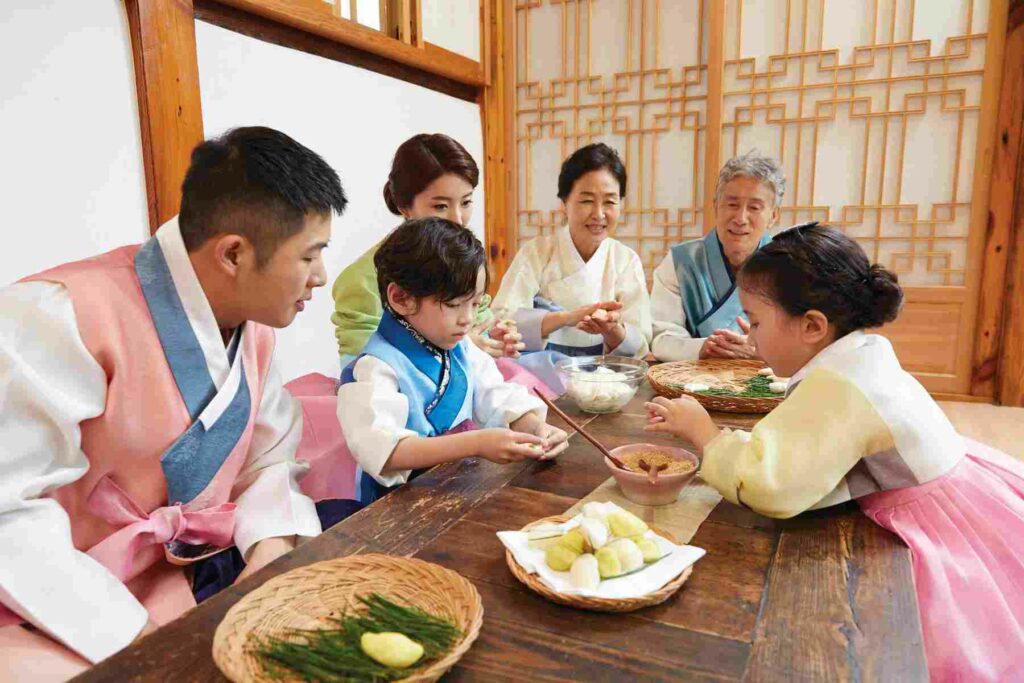
#6. Korea and Japan
Part of the culture in Korea is to never forget the past war with Japan, where the Japanese Imperial Army made many Koreans slaves, and forcefully made many Korean women as “comfort women” or sex workers to please the Japanese soldiers. Korea has always been with a tight relationship with Japan. And they always make sure to teach the students about the past and still grieve and respect the past even though it happened a long long time ago. But, of course even with the cold unspoken war, somehow, Koreans and Japanese are making way to connect through films, series, and even music. Many K-pop artists are Japanese these days.
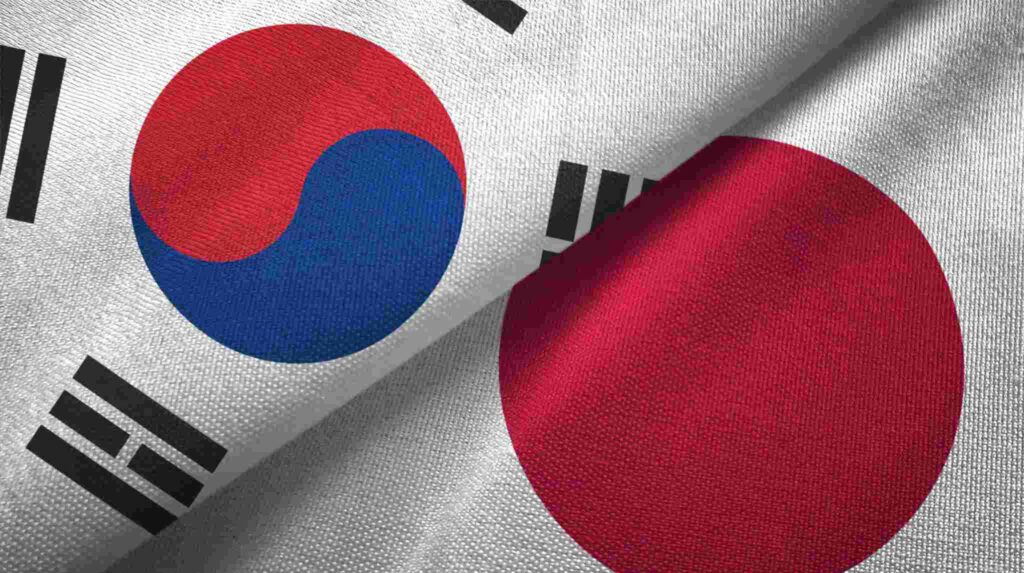
#7. Doljanchi
Doljanchi or Dol is the first birthday celebration of a Korean baby. The baby will wear traditional clothing like Hanbok and will do a traditional picking of items. So, this culture is done to determine or see what will be the baby’s future profession it is a tradition in Korea that has been done ever since. This is called doljabi or a fortune-telling game. The baby will be presented with a bowl of different things. Some of the items are:
- Stethoscope – means the child will be a doctor someday.
- Microphone – means the child will be an entertainer in the future (be it a singer, hosts, artist, etc)
- Gavel – means the child will be a lawyer or a judge
- Sports ball or golf ball – means the child will be an athlete
- Computer mouse – means the child will be on the field with computers
- Money – means the child will be wealthy
- Brush or Pencil – means the child will be a scholar or will grow up smart
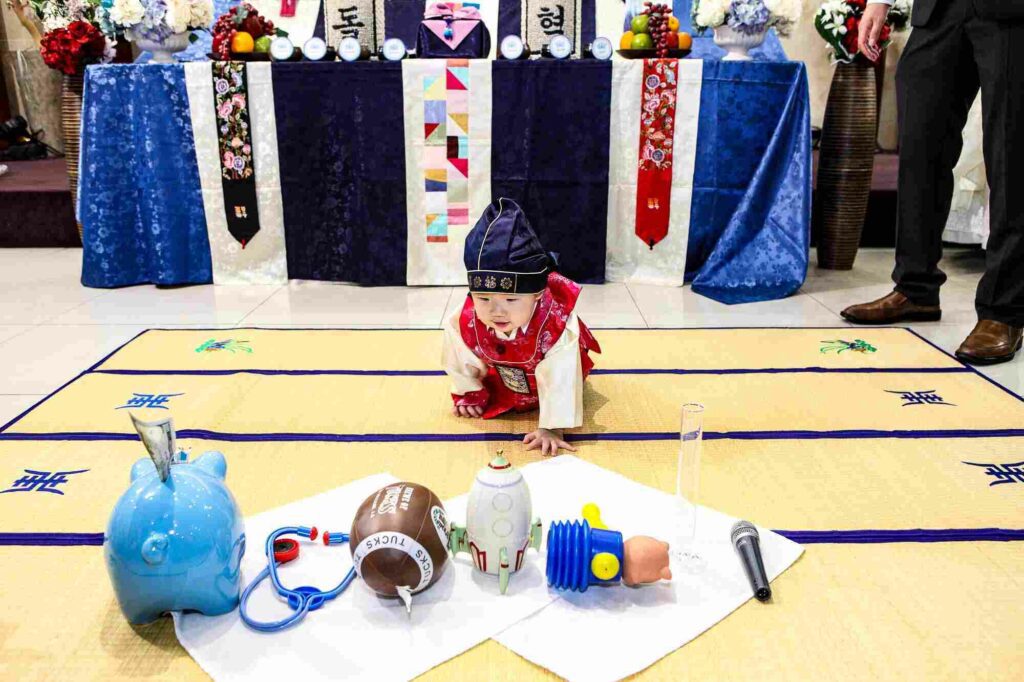
#8. Leaving your shoes in the doorway
Unlike in western culture or in some other parts of Asia. In Korea, it is a practiced culture wherein you will take off your shoes in the doorway or entranceway before coming into somebody else’s house. It is to show respect for somebody else’s home.

#9. Table Etiquette
In Korea, table manners are really observed. Table etiquette symbolizes that a person is well-raised and educated. Also, there is a custom that when eating, bowls (where the rice is placed) should not be lifted off the table when eating. In order to not spill the food, you should bow down to the table instead of putting your hands higher onto your mouth and risking spill of food.
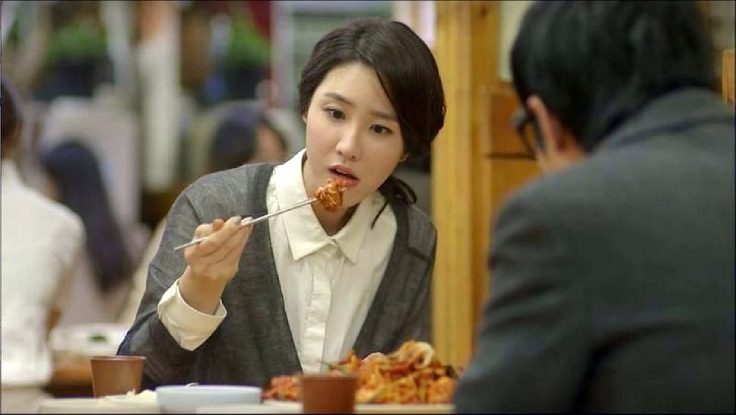
You May Also Like These
#10. Aegyo
Aegyo means “acting cute”. It is usually a culture in Korea that women do this in order to get something they want. Sometimes men also do this especially actors or K-pop idols in order to please their female fans. Some find this trend cringey but others find this very cute.
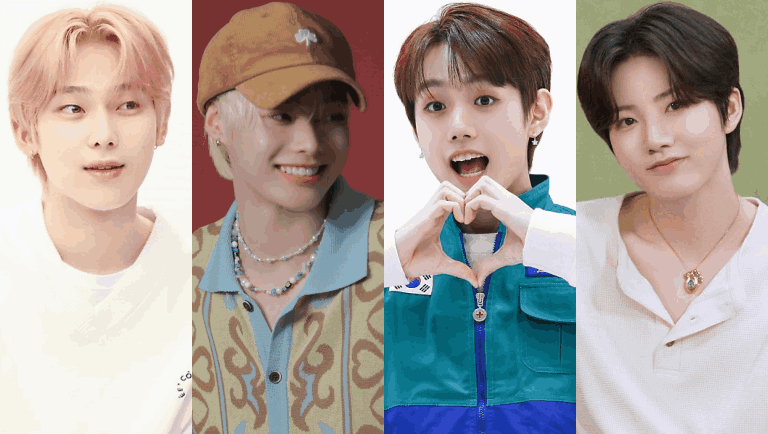
The list doesn’t end on just 10 Interesting Facts About Korean Culture and Traditions. Infact the korean culture is one of the respected culture around the globe. Some other interesting facts that you might or might not be aware of about Korean culture are:
- Respect for elders: In Korean culture, elders are respected and their opinions are highly valued.
- Family is important: Family is at the center of Korean culture and traditions, with tight-knit families often living close to each other and meeting regularly.
- Traditional Clothing: Hanbok is the traditional clothing worn in Korea, often worn on special occasions like weddings and festivals.
- Food culture: Korean cuisine is rich and diverse, with staple dishes including kimchi, bibimbap, and bulgogi.
- Education is highly valued: Education is seen as a path to success in Korea and students are often under intense pressure to perform well in school.
- Korean tea culture: Drinking tea is a cherished tradition in Korea and there are many different types of tea with their own traditional preparation methods and cultural significance.
- Confucianism: Confucianism has had a strong influence on Korean values and attitudes, promoting ideals such as respect for elders and hierarchy, and a strong work ethic.
- Pansori: Pansori is a form of musical storytelling that is performed by a singer and drummer. It is considered a form of intangible cultural heritage by UNESCO.
- Festivals: Korea has a rich tradition of festivals, including the Lunar New Year, Chuseok (Harvest Festival), and the Boryeong Mud Festival.







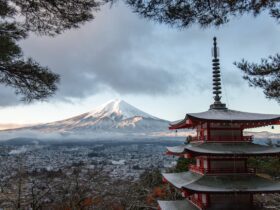




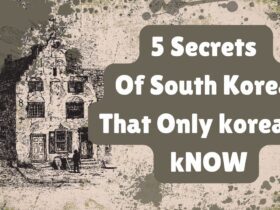

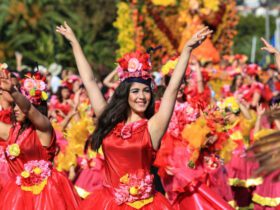



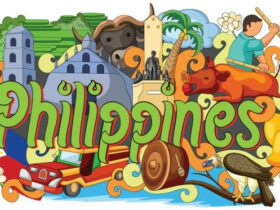
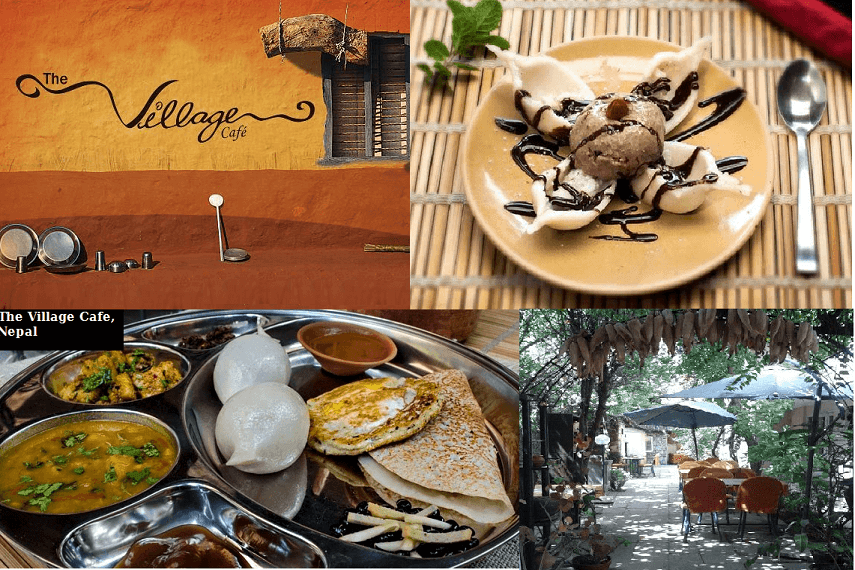









Leave a Reply
View Comments